Do you suffer from chronic back pain? You’re not alone! Back pain is the leading cause of disability worldwide. Without treatment or intervention, it has been medically linked to arthritis, among other problems.
If you are sick of missing work or missing out on recreational activities and family time because of long-term chronic pains, there is some good news! Chronic back pain often results from poor posture, and patients suffering from it often find quick and easy relief from the regular use of a posture corrector.
Our Recommendation for a Posture Corrector
To improve your posture, a posture corrector is probably the easiest and quickest route!
Our favorite posture corrector is the FY Posture Adjustable Back Straightener (available from Amazon) because it is breathable, adjustable, and effective. The design is perfect for men, women, and even children. This amazing product also comes with a 30-day no-questions-asked money-back guarantee and responsive customer service for troubleshooting.

What Causes Our Back Pain

Upper and lower back pain is a symptom of many conditions, and the proper treatment depends on its root cause. Fortunately, the pain is usually of mechanical origin, meaning it is not caused by underlying musculoskeletal disease, and patients can treat the pain without surgery or prescription medication.
One of the most common mechanical causes is poor posture. From a young age, most Americans spend most of their time hunched over school work and, more recently, laptops. Consequently, bad posture is so common that many people do not even realize they have it.
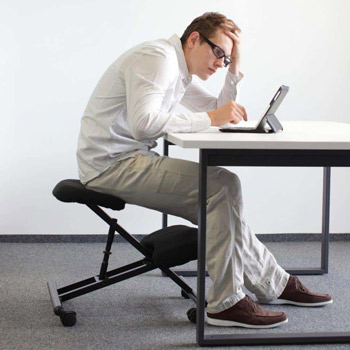
This means that the support system for your back will be unevenly dispersed. If the situation persists for too long, you can develop severe, debilitating pains in the area of your spine. Findings have also shown that uneven pressure causes stress on your joints and has been linked to other problems like arthritis.
Benefits of Having Good Posture
Proper posture has a wide range of physiological and psychological benefits.
Most importantly, it will improve your muscle, bone, and joint health, leading to decreased upper and lower back pain. While it may not certainly cure your arthritis, it does affect your overall health.
Chronic pain usually prevents many people from getting the exercise they need. On the other hand, improved posture can enable people to further improve their muscle, bone, and joint health through increased activity. More movement is good for your heart and will also improve cardiovascular health, too.
With better posture leading to a more evenly distributed weight, it also indirectly improves circulation and breathing. If you are hunched over, your lungs and some veins will be compressed. Improved respiration and circulation mean that more oxygen gets to all parts of your body. This can help with leg pain, migraines, and other physiological issues especially those related to your spine.
Both exercise and proper posture have been known to also increase one’s confidence. This psychological boost can improve your overall mental well-being, give you peace of mind, and help you in every aspect of your life, such as your personal relationships and business dealings.
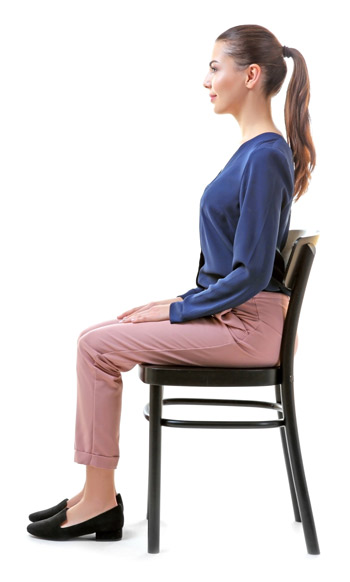
Identifying Bad Posture

The first step to correcting one’s problem is recognizing that you have bad posture.
A major characteristic of poor posture is the hunched-over position that many people assume when working at a desk or performing household chores such as cleaning dishes or weeding a garden. If you find that your shoulders and neck lean forward even when you are not doing these activities, it means you are far from the ideal of a properly aligned, straight back.
Here’s How Posture Correctors Work

After many years of slouching, many people are unaware of what proper, good posture feels like. In fact, the unfamiliar position may seem uncomfortable at first and difficult to maintain. A posture trainer works by strengthening, aligning, and holding your back in the correct position, so you don’t have to remind yourself or think about it or wonder if you are doing it correctly.
How to Use a Posture Corrector
Using a posture corrector is simple and requires little or no practice at all.
- Put the back brace over your shoulders.
- Adjust the brace’s straps. Take care to ensure that they are snug but not tight.
- Remember to wear these devices underneath your clothing; this makes your brace most effective.
- To get used to wearing your back brace, start by alternating short periods of time wearing the device with longer periods of time not wearing it. After a while, proper posture should become second nature.
How Long Should You Wear One
The exact length of time to wear your device depends on your initial condition, your goals, and the instructions on your brace. Remember that it is always a good idea to consult your doctor to get the most tailored, medically sound advice.
Most people start by wearing their posture corrector for short periods of time at frequent intervals throughout the day. While proper posture should never hurt, it is so unfamiliar to many that it can feel uncomfortable at first. As this discomfort lessens, you can wear the product for longer periods of time.
The goal, however, is not to have to wear it forever by strengthening one’s muscle memory. After a few weeks, you should have enough muscle memory to maintain good posture without any assistance.

When Should You NOT Use Them
Posture correctors can be worn most of the time, though they will be particularly effective when you engage in activities that tend to worsen posture such as sitting at a desk.
They can, however, slightly limit arm movement. For this reason, you should not wear them while swimming or performing any other tasks that need a full range of arm motion.
Popular Articles on ComproGear.com
Learn about the different compression stocking types with our articles about medical grade compression stockings and the best compression gout socks. We also have several educational articles about compression socks for large calves and bariatric compression socks.
What to Look for in a Posture Corrector
Like most products, it is important to do your research before buying a posture corrector. Consider the following when making your decision:
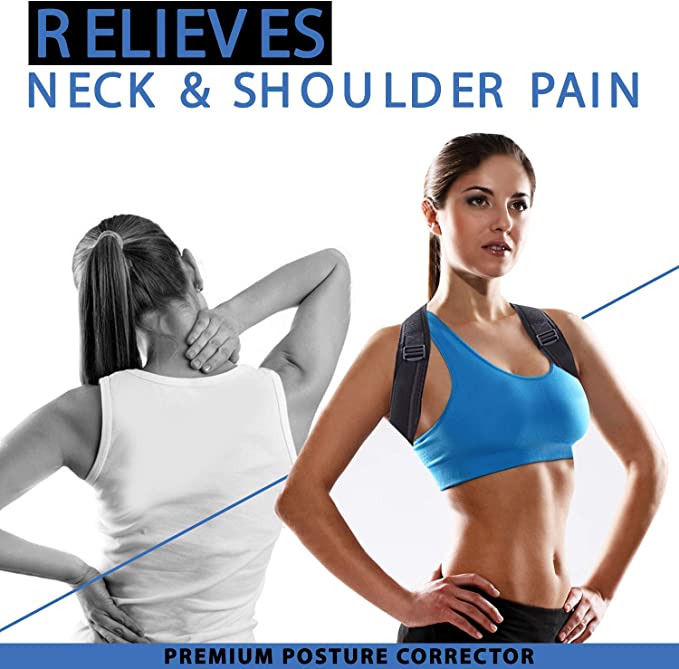
- Effectiveness: If your posture corrector does not, in fact, correct your posture, then it is a waste of time, money, and effort. Make sure to check a product’s reputation and its reviews before making your purchase. It’s also a good indicator if a product has been medically reviewed.
- Cost: While a posture corrector is generally going to be several orders of magnitude cheaper than surgery or long-term prescription pain medication as a solution for back pain, it is still a good idea to compare prices to make sure you are not spending more than is needed.
- Discreet: If you plan to wear your posture corrector at work or in public, you will want to get something that is lightweight, breathable, and discreet. A large, bulky unit will not easily be hidden beneath clothes.
- Adjustability: In general, be leery of any type of product that claims to be “one size fits all.” Make sure that you get a posture corrector that is completely adjustable. An improperly fitted posture corrector may be worse than not wearing one at all.
- Material Quality: While it is essential to make sure you get a good deal, it is also imperative to make sure you are not compromising quality when shopping for a bargain. Poorly made products will fray and can cause irritation after only a few uses. To get a good idea of a product’s quality, look at the company’s return policy. Companies that advertise their money-back guarantees are usually a good indication because they bet their profits on the user’s happiness.
The Best Posture Corrector
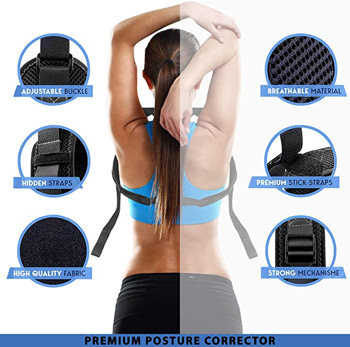
Based on the above criteria, the best posture corrector is the FY Posture Adjustable Back Straightener. As the name implies, it is fully adjustable and made to fit men, women, and even children. This posture corrector is lightweight and can easily be concealed beneath clothing. The product itself is also not much more expensive than a short-term supply of over-the-counter pain medication, but it actually solves the root cause instead of just treating symptoms.
Most importantly, the FY Posture Adjustable Back Straightener actually works! It is made of high-quality materials so you can continue using it until your muscle memory holds your back muscles upright. The company is so confident in its product that they have a 100% no-questions-asked money-back guarantee that lasts for 30 days — more than enough time for you to decide whether the product is working for you.
Other Ways to Improve Posture
For the best results, you should couple your posture corrector regimen with other posture-improving habits and actions.
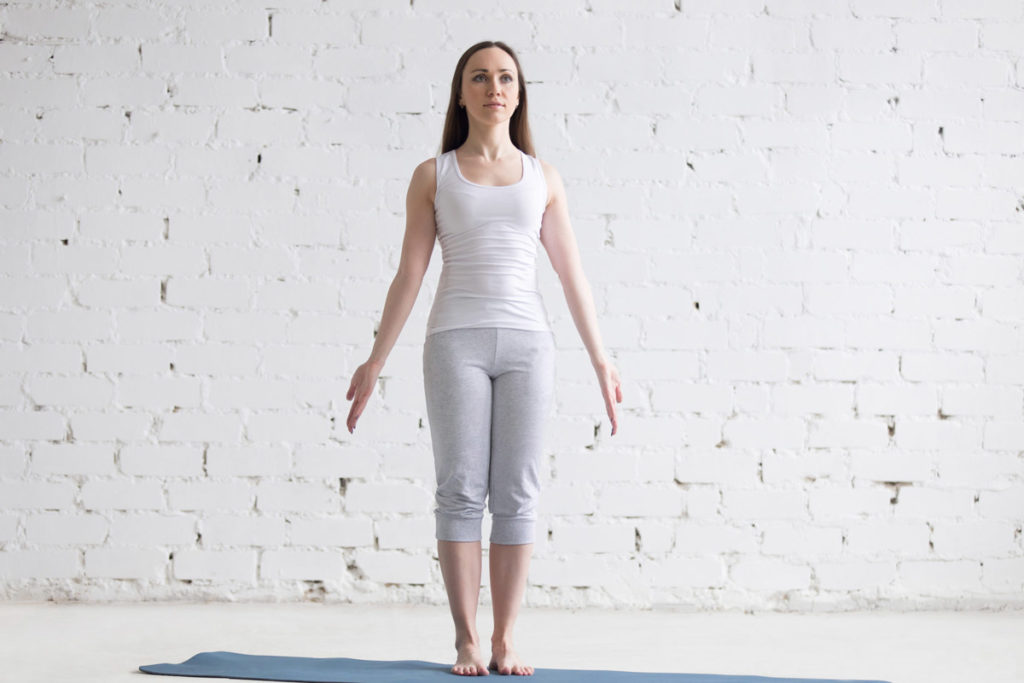
When Standing
You will use your whole body to correct your standing posture. The balls of your feet should support most of your body weight, and they should be about shoulder-width apart. Try to stand up tall with your stomach tucked in and your earlobes in line with your shoulders.
Most importantly, take care not to slouch or lean on objects such as countertops or tables to support your weight.
When Seated
Ideally, you should sit so that your feet are on the floor, shoulder-width apart and uncrossed. If your feet do not reach the floor, consider getting a small stool or footrest. Your knees should be level with your hips and reach out a few inches beyond the base of the chair. Make sure you do not lean on your desk for support!

In general, sitting for long periods of time is bad for you. Aim to get up and stretch or take a short walk every hour or so if possible.
While Sleeping
Find a mattress that is firm but comfortable for the best results, and use special pillows if needed.
You should also consider putting a small pillow between your knees when lying on your side or under your knees when lying supine. In general, you should avoid lying prone on your stomach.

Good Neck and Back Stretches for Healthy Backs

You can also try some stretches to loosen your neck, back, and shoulder muscles so that you are better able to assume a proper posture. Some good ones to try include:
- Chin Tucks: Stand against a wall, tuck your chin under, and then bring your head back against the wall.
- Shoulder Stretch: Stand in a hallway or doorway and stand so that your forearms are against opposite sides of the hall or doorway. Lean forward while keeping your arms against the wall until you feel a stretch.
- Shoulder Blade Squeeze: Lace your hands behind your head. Your elbows will probably naturally point forward. Bring your elbows out 90 degrees so that your arms form a straight line. Squeeze your shoulder blades together while in that position.
Do these stretches several times a day. You can increase the hold time and the number of reps every few days. And remember, when you give a few minutes of your time to these little stretches, they are good for the heart, too!
Frequently Asked Questions About Back Pains and Posture Correctors:

Will My Good Posture Last After I Take the Brace Off?
You have to retrain your back and shoulder muscles to know what good, proper posture feels like, and then maintain this for an extended time so that it becomes second nature. Your good posture should last after frequent use over a few weeks. If you notice that you are starting to slip again, you can always repeat the regimen as needed.
When Should I Consult a Doctor?

You should see a doctor as soon as you start having back pains – before initiating treatment. Although a posture trainer and other similar devices are safe for most people, you will want to rule out other causes. Some people may also need to change their pain medications after starting their therapy or regimen, and any medication change should be medically reviewed by a doctor.
Are Posture Correctors Comfortable?
It may feel uncomfortable to wear one at first, but wearing posture correctors should never be painful. If you feel pain, adjust the straps and make sure you are following all of the manufacturer’s instructions. If you still feel pain after that, talk to your doctor. Wearing your posture corrector should also become less uncomfortable as time passes because the correct posture becomes more familiar.
Some posture corrector devices, including the FY Posture Adjustable Back Straightener, offered on Amazon, come with armpit pads to help prevent chafing, which can sometimes occur when posture correctors are worn with certain types of clothes.
Can I Use My Posture Corrector While Exercising or Sleeping?
You can probably engage in a light exercise like walking while wearing a posture corrector, especially if you only exercise for a short time. On the other hand, wearing them may inhibit more intense or longer-lasting exercise. You should also make sure never to swim or engage in activities like climbing where your safety is heavily dependent on having a wide range of arm motion.

Wearing a posture corrector while sleeping is not generally advisable. Most people feel some discomfort, so this may make it difficult to fall asleep or cause you to fall asleep in weird positions that do more harm than good.
Our Final Word
Posture correctors can do wonders for chronic back pain, and they can help improve overall physiological and psychological well-being. Our favorite posture corrector is the FY Posture Adjustable Back Straightener (available on Amazon) because it is effective, lightweight, and adjustable. It also includes a money-back guarantee for your peace of mind! When combined with other posture-improving habits, this product can save you hundreds if not thousands on pain medications, missed work opportunities, and treatment or surgery. Give a loved one who needs it today!
